by Moe | Feb 20, 2013 | DNA, Featured, Irish History
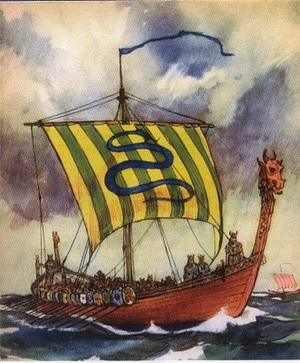 Amongst the ancient Greek legendary stories of certain families and genealogies, it appears, that none equal the splendor of a particular family that had originated in Thebes. In legend they are known as the descendants of Cadmus, the Sparti (the sown men), a Boeotian aristocracy from the Peloponnese region of Greece that were also called the Pelopids.
Amongst the ancient Greek legendary stories of certain families and genealogies, it appears, that none equal the splendor of a particular family that had originated in Thebes. In legend they are known as the descendants of Cadmus, the Sparti (the sown men), a Boeotian aristocracy from the Peloponnese region of Greece that were also called the Pelopids.
This same family I had written about in my previous articles, The BirthMark of Cain and Dragon Lords of Thebes: From Cadmus Came the Race of the ‘Spartoi’ (The Sown Ones), I had detailed how this particular family were the original inheritors of a mythical birthmark that was often described as white, and usually in the shape of a spear or an anchor. These stories started well before the time of Christ and had been told throughout history by great historians such as Plato, Aristotle, and Plutarch.
In Old English a birthmark is known as a “Kynemark,” or in English a “Kings Mark.” You will find that these sown men with the birthmark or kings mark appear time and time again in some very famous stories throughout history. These legends were not only told in Thebes, but they had spread around the world to the point where you will find that many of the greatest men throughout history are often described as having these ‘divine or mythical birthmarks.’ (more…)
Moe is the founder of GnosticWarrior.com. He is a father, husband, author, martial arts black belt, and an expert in Gnosticism, the occult, and esotericism.
by Moe | Feb 14, 2013 | DNA, History of the Brotherhood
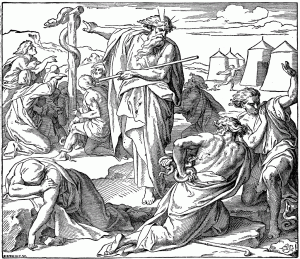 In Latter-day Saint theology, Cain is considered to be the quintessential Son of Perdition, the father of secret combinations (i.e. secret societies and organized crime), as well as the first to hold the title Master Mahan, meaning master of [the] great secret, that [he] may murder and get gain.
In Latter-day Saint theology, Cain is considered to be the quintessential Son of Perdition, the father of secret combinations (i.e. secret societies and organized crime), as well as the first to hold the title Master Mahan, meaning master of [the] great secret, that [he] may murder and get gain.
The “Biblical birth” of the “story of Cain” shows us that Adam and Eve had disobeyed Gods’ orders and had been seduced by the serpent. The result of this seduction was that Adam and Eve had three children, Cain, Abel and Seth, then “other sons and daughters”[Gen 5:4]. Adam knew his wife Eve intimately, and she conceived and gave birth to Cain. She said, “I have had a male child with the Lord’s help.” “In Gen. 3:15 God is speaking to the serpent, ‘and I will put enmity between thee and the woman, and between thy seed and her seed; it shall bruise thy head, and thou shall bruise his heel.’ The meaning of “seed” is also referred to as the word of God (Matt. 13:18-23; Luke 8:11; 1 Pet. 1:23) and as the spiritual life in (1 John 3:9). (more…)
Moe is the founder of GnosticWarrior.com. He is a father, husband, author, martial arts black belt, and an expert in Gnosticism, the occult, and esotericism.
by Moe | Feb 7, 2013 | Featured, History of the Brotherhood
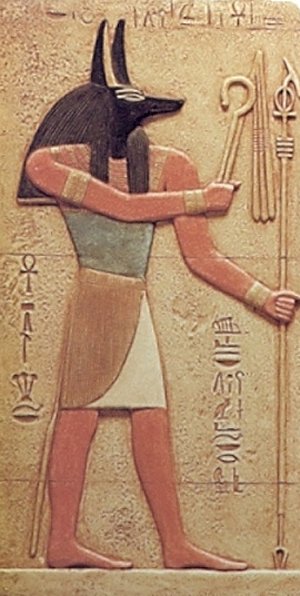 In an ancient hymn to the god Amon-Ra, it is said that “the gods gather as dogs round his feet.” This connection between dogs, humans, kings and the gods goes back thousands of years. They were not only a pet for our ancient ancestors as they are today for many people, but were also adored as gods and even kings took on the title “dog of the sun,” or “head king.”
In an ancient hymn to the god Amon-Ra, it is said that “the gods gather as dogs round his feet.” This connection between dogs, humans, kings and the gods goes back thousands of years. They were not only a pet for our ancient ancestors as they are today for many people, but were also adored as gods and even kings took on the title “dog of the sun,” or “head king.”
This head king we clearly see in Anubis (Anpu), the dog headed Egyptian God of the judgment, protection and the divine guide to the dead for their journey into the afterlife. In later times, during the Ptolemaic period, Anubis was merged with the Greek god Hermes, becoming Hermanubis.
The Cult of Hermanubis was located in uten-ha/Sa-ka/ or Cynopolis, a place whose Greek name simply means “city of dogs”. In the name uten-ha/Sa-ka we can clearly see the ancient Persic name for Sak, meaning “dog.” The word Sak was the name of an ancient tribe called the Sakai or Saka and Sacse, Saha, Sahia, of India; or the Median Straxa, which are all mutations of the same word Sak (dog). The city of dogs is where I believe the story from the dogs of the sun, dog priests and dog kings had begun. (more…)
Moe is the founder of GnosticWarrior.com. He is a father, husband, author, martial arts black belt, and an expert in Gnosticism, the occult, and esotericism.
by Moe | Feb 5, 2013 | Featured, History of the Brotherhood
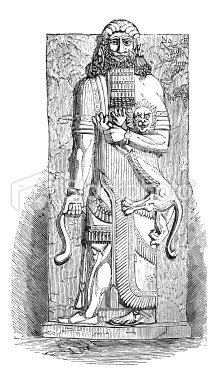 The meaning of Nimr is “the leopard,” and rod means “to subdue.” Therefor, Nimrod either means the “leopard who subdues” or the “leopard tamer.” In Hebrew, Nimrod signifies spotted. He is often depicted in wearing a garment of a leopard.
The meaning of Nimr is “the leopard,” and rod means “to subdue.” Therefor, Nimrod either means the “leopard who subdues” or the “leopard tamer.” In Hebrew, Nimrod signifies spotted. He is often depicted in wearing a garment of a leopard.
Nimrod, who was born on December 25th, the High Sabbath of Babylon, was the founder of Babylon and the city of Nineveh. The Tower of Babble was said to have been erected by the descendants of Nimrod. There are also several places in Palestine that are named after the leopard. Places such as ‘Nimrah‘ (Numb, xxxii. 3, 36); ‘Nimrim’ (Isa. xv. 6, Jer. xlviii. 34), and ‘the mountains of the leopard’ (Cant. iv. 8). ‘Nemeirah’ is also a place near the Dead Sea.
According to the Book of Genesis and Books of Chronicles, Nimrod is the son of Cush, grandson of Harm and great-grandson of Noah. The Book of Jubilees mentions the name of “Nebrod” (the Greek form of Nimrod) only as being the father of Azurad, the wife of Eber and mother of Peleg (8:7). This account would thus make him an ancestor of Abraham, and hence of all Hebrews. His “kingdom” comprised Babel, Erech, Accad, and Calneh, in the land of Sinar, otherwise known as the land of Nimrod (Gen. 1:. 8-10; I Chron. i. 10; Micah v. 5 [A. V. 6]). (more…)
Moe is the founder of GnosticWarrior.com. He is a father, husband, author, martial arts black belt, and an expert in Gnosticism, the occult, and esotericism.
by Moe | Feb 4, 2013 | Featured, History of the Brotherhood, Irish History
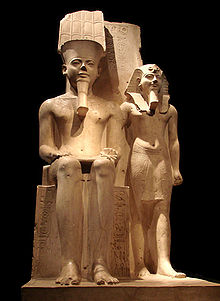 The mythical Wodan, or more commonly known today as Odin; is said to be in legend the first “unofficial” founder king of Danmark (Denmark) who had reigned before Christ (B.C.) 1040, which was the 8th year of the reign of David, King of Israel. When I say that he was the unofficial founder king, I mean that he is not currently recognized as the “founder and king” of the current ruling Danish monarchy. The Danish monarchy today trace their lineage back to the Viking kings Gorm the Old and Harald Bluetooth from the 10th century; making the monarchy of Denmark the oldest in Europe.
The mythical Wodan, or more commonly known today as Odin; is said to be in legend the first “unofficial” founder king of Danmark (Denmark) who had reigned before Christ (B.C.) 1040, which was the 8th year of the reign of David, King of Israel. When I say that he was the unofficial founder king, I mean that he is not currently recognized as the “founder and king” of the current ruling Danish monarchy. The Danish monarchy today trace their lineage back to the Viking kings Gorm the Old and Harald Bluetooth from the 10th century; making the monarchy of Denmark the oldest in Europe.
The purpose of this article is not to validate or invalidate the current Danish monarchy, but to place a light on the hidden history of the founding of Denmark and its founder kings long before the 10th century A.D. Viking kings had come onto the world stage. In order to do this, we must go back approximately another 2,000 years in a time when the Pharaohs had ruled Egypt on the other side of the world.
The mythical King Dan I in legend is the founder of Denmark. However, his real name was not Wodan, Odin 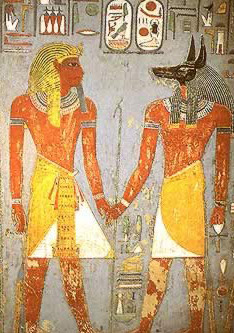 or even King Dan I. These names are actually titles or assumed names that are derived from the Hebrew word Adonai (אֲדֹנָי) “my lords,” from adon “lord, owner or master.” The singular form is Adoni, “my lord”. This was used by the Phoenicians for the god Tammuz and is the origin of the Greek name Adonis. Jews only use the singular to refer to a distinguished person. The plural form is usually explained as pluralis excellentiae. The pronunciation of the tetragrammaton came to be avoided in the Hellenistic period, therefore Jews use “Adonai” instead in prayers, and colloquially would use Hashem (“the Name”).
or even King Dan I. These names are actually titles or assumed names that are derived from the Hebrew word Adonai (אֲדֹנָי) “my lords,” from adon “lord, owner or master.” The singular form is Adoni, “my lord”. This was used by the Phoenicians for the god Tammuz and is the origin of the Greek name Adonis. Jews only use the singular to refer to a distinguished person. The plural form is usually explained as pluralis excellentiae. The pronunciation of the tetragrammaton came to be avoided in the Hellenistic period, therefore Jews use “Adonai” instead in prayers, and colloquially would use Hashem (“the Name”).
Adonai, the name for both Deity and to man is used approximately 449 times in the Old Testament and 315 times in conjunction with Yahweh. The name “Dan” is short for Wodan/Odin whose names are title’s that originate from Adonai with the Greek version being the singular “Adoni.” Jews only use the singular in Adonai to refer to a distinguished person such as we find in the Anglos-Saxon Wodan or Norse Odin. Hence, for the name of the lord; the Jews use Adonai, the Greeks use Adoni, and the Norse Odin and Anglo-Saxons Wodan. (more…)
Moe is the founder of GnosticWarrior.com. He is a father, husband, author, martial arts black belt, and an expert in Gnosticism, the occult, and esotericism.
 Amongst the ancient Greek legendary stories of certain families and genealogies, it appears, that none equal the splendor of a particular family that had originated in Thebes. In legend they are known as the descendants of Cadmus, the Sparti (the sown men), a Boeotian aristocracy from the Peloponnese region of Greece that were also called the Pelopids.
Amongst the ancient Greek legendary stories of certain families and genealogies, it appears, that none equal the splendor of a particular family that had originated in Thebes. In legend they are known as the descendants of Cadmus, the Sparti (the sown men), a Boeotian aristocracy from the Peloponnese region of Greece that were also called the Pelopids.





